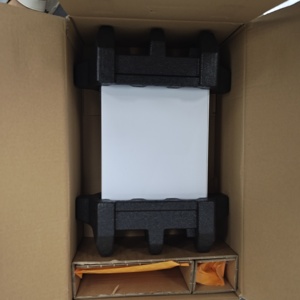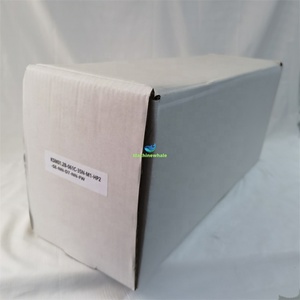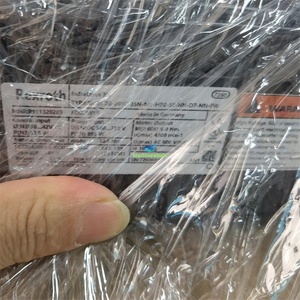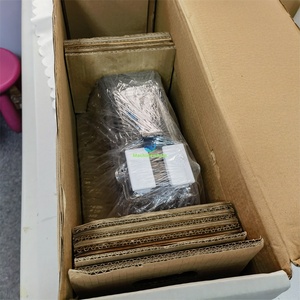
All categories
Featured selections
Trade Assurance
Buyer Central
Help Center
Get the app
Become a supplier

(2568 products available)





































Integrated servo drives are available in various configurations to cater to different industrial requirements. Below is the classification based on the types of motors the drives control.
These drives control AC servo motors, offering high speed, efficiency, and robustness. These drives are ideal where such factors are utmost, such as in continuous operations and high-performance automation. Due to their good thermal stability and low maintenance, AC servo drives are often preferable to their DC counterparts in many situations.
DC servo drives are designed for simplicity in control and systems’ demands that ensure low speeds with good torque. While less common in new designs, they still find applications in systems requiring constant speed. Often, these drives are used in niche settings and legacy systems for slower, high-torque operations.
These drives can control multiple axes simultaneously, as their name suggests. They are crucial in complex manufacturing and robotic applications where synchronisation of multiple movement axes is necessary. The multi-axis drives help reduce space and installation complexities while enhancing control precision over multiple actuators.
Drives with integrated safety functions are now more in demand as users look for systems with better safety measures. Such drives are installed with capabilities to handle safety tasks like emergency stops and torque limits without needing additional components. Their use accelerates safety applications that require rigorous adherence to operational safety stops.
Robotics is one of the areas in which high-performance systems that must handle hundreds of tasks utilise Integrated Servo Drives. In robotic arms, these drives ensure movement precision in load handling, positioning, and joints’ smooth operation. The result is improved production time in businesses that heavily rely on automation.
The packaging industry’s various applications, such as filling, capping, labelling, and case packing, use these drives responsibly. Integrated servo drives’ speed variability allows them to adjust to different packaging materials and product dimensions dynamically. This ensures that the systems remain efficient and increase the systems’ overall productivity and versatility.
Textile machinery such as looms and knitting machines uses Integrated Servo Drives to help achieve the fine control that leads to quality fabrics. Precision control enables operators to vary speeds on critical machinery, ensuring that fabric patterns are tightly adhered to. Further, there is a significant reduction in waste and rework with this enhanced accuracy.
Integrated servo drives are important in the textile industry since they help enhance efficiency, reduce errors, and enable complex design implementation.
In assembly lines, which are common in manufacturing industries, these drives help in the precise control of components in a way that facilitates tighter tolerances and higher product consistency. No matter the load volume, speed control allows for optimal operation as fast parts are assembled and slow ones manipulated, thus improving overall time without sacrificing quality.
CNC machines need high precision and reliability, and Integrated Servo Drives fulfil those requirements. They give greater control over cutting tools and materials, increasing accuracy in complex tasks. The result is lower material waste and less rework, translating into higher operational efficiency.
Technical specifications are important when evaluating the servo drive system to ensure that it meets operational needs. Key parameters include the power range, the system’s allowed speed, torque constants, and feedback equipment. The power range indicates the drive’s ability to handle a given motor size, while speed and torque determine the performance level of dynamic positioning or holding. Feedback components ensure smooth operation by giving the accuracy needed for closed-loop control, which may include encoders or resolvers.
Communication Protocols
Integrated Servo Drives frequently support popular communication protocols like EtherCAT or Modbus. These protocols ease the drive’s integration into existing control networks. They also facilitate quick data transfer for real-time control. Their flexibility thus allows such drives to adapt to various industrial automation systems in a way that promotes better connectivity and coordination.
Energy Efficiency
Integrated energy-saving components like regenerative braking and optimal energy usage modes lower overall electrical consumption in these drives. This is especially important in high-energy-consuming applications where efficiency improves operating costs and reduces the carbon footprint. Over time, energy savings lead to cost reductions, making the systems more environmentally friendly.
Compact Design
These drives integrate the servo amplifier within the motor in a space-efficient design that separates traditional components. This diminutive form factor makes installation easy, especially in places with limited physical access or requiring tight spaces. The compact design also minimises wiring complexity, improving systems’ operational reliability and aesthetics.
Flexible Control
These drives offer control over position, speed, and torque in a single unit, enabling flexibility in different operating requirements. This multi-function control allows industries to converge on a single drive solution rather than multiple components for diverse tasks. It simplifies system design and control strategies while increasing operational flexibility.
Correct installation of the servo drive motor is paramount for performance. Follow manufacturer guidelines, ensure proper wiring, align components, and set parameters. A well-executed assembly minimises issues and maximises efficiency.
Upkeep is essential, so regular checks should be made of the drives at specified intervals. Preventative maintenance should also involve software updates and checks of mechanical linkages. Repairing issues promptly will ensure the system remains reliable.
The servo controller should have a motor and controller that varies speed and torque to ensure operational needs are met. Check that communication formats are compatible so that the drive can integrate efficiently within the existing system environment. Ideal compatibility will lead to synergy in the systems that promote easy handling and better performance.
Examine load sizing, speed range, and motion type to determine the drive’s capability. Check that the drive can handle the required torque and speed for the load and provide the necessary control for motion profiles. Drives tailored to specific application demands reduce wear and enhance the performance in those applications.
Drives with high energy effectiveness can significantly reduce operating costs and resource consumption in the long run. Look out for such features as regenerative braking and energy-saving modes. These will cut energy costs and subsequently reduce carbon emissions, making the operations more cost-effective and environmentally friendly.
Opt for reputable suppliers who give in-depth technical support and quick replies. A well-supported drive will ensure a drive that performs and is reliable over time. Look into the supplier's documentation and resources; they should be extensive. Consider the available service centres and warranty coverage. These factors will enhance system uptime and performance.
A1. Integrated servo drives combine the motor and drive into a single unit for streamlined control in industrial applications. They provide precise control of movement, enhancing automation systems' efficiency and reliability.
A2. These systems offer reduced space requirements, simpler installation, and improved energy efficiency. They also enhance performance through precise control and faster response times in automation processes.
A3. While traditional systems separate the motor and drive, Integrated drives combine them, simplifying systems. This integration reduces components, making setups more compact and easier to manage without sacrificing control.
A4. High-tech manufacturing, robotics, and packaging industries are most suited for these drives. In such industries, the demand is for high precision, quick response, and efficient motion control in complex automation tasks.
A5. Yes, they are particularly suitable for multi-axis applications. There are multi-axis integrated drives that control more than one axis simultaneously. This feature is good for synchronisation, reducing space and simplifying system design.